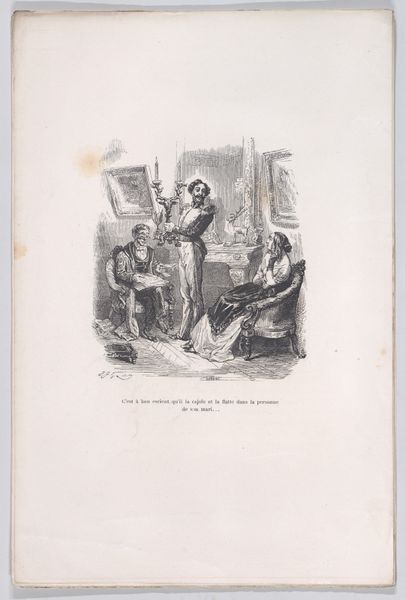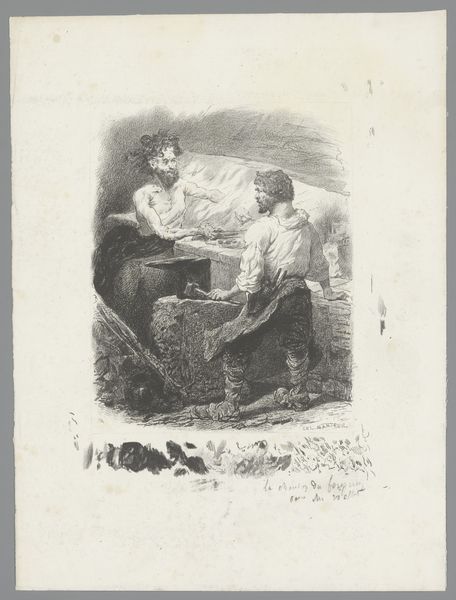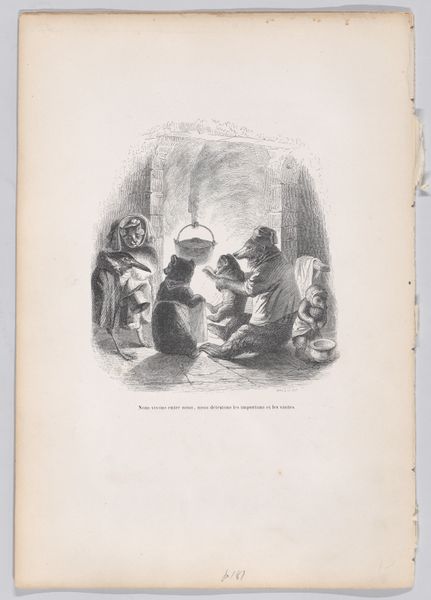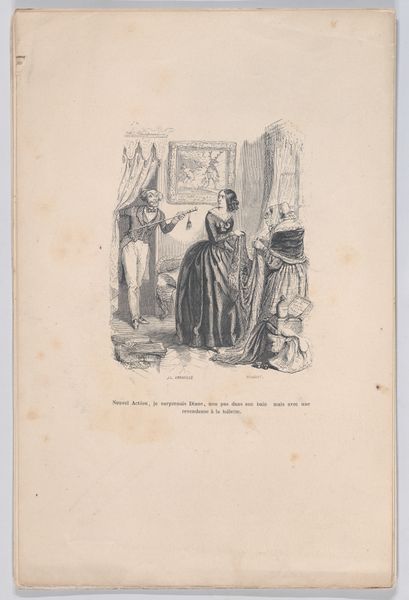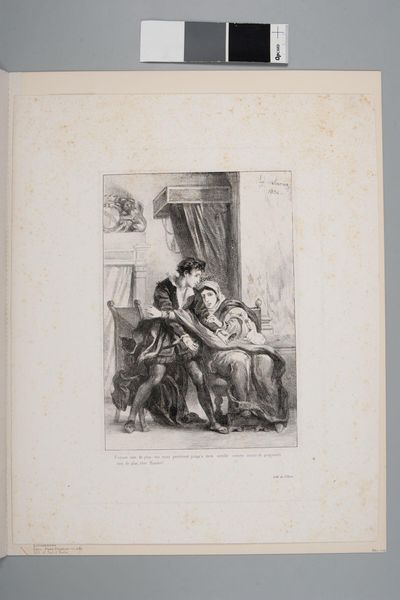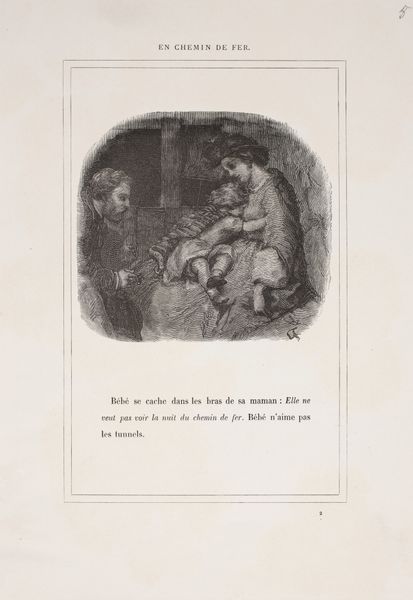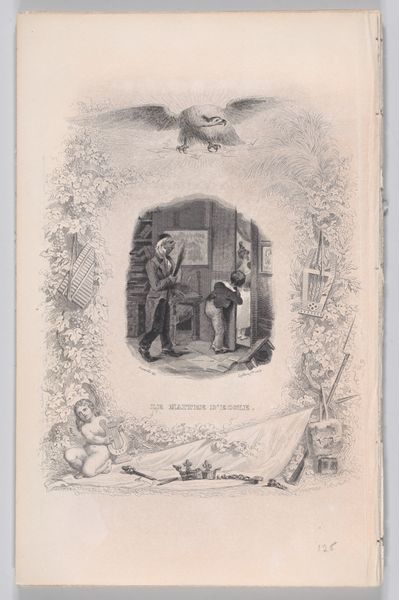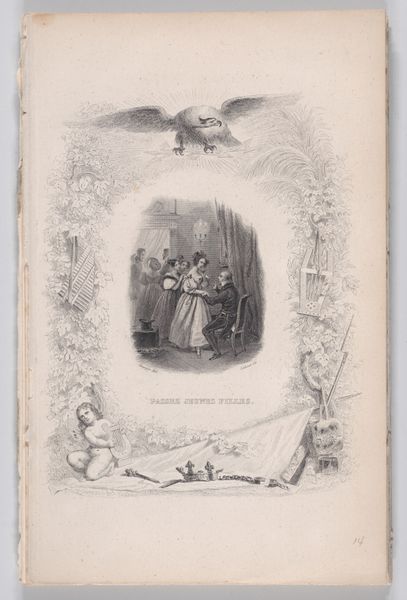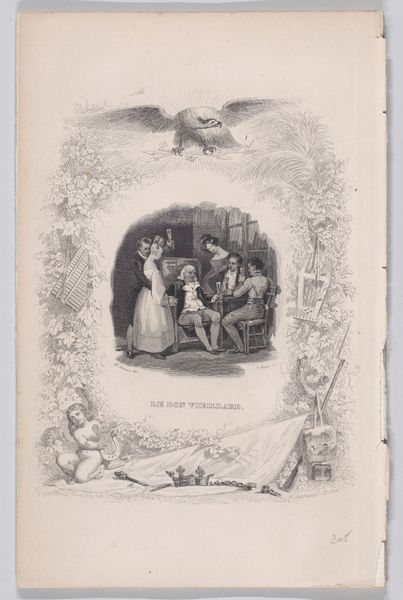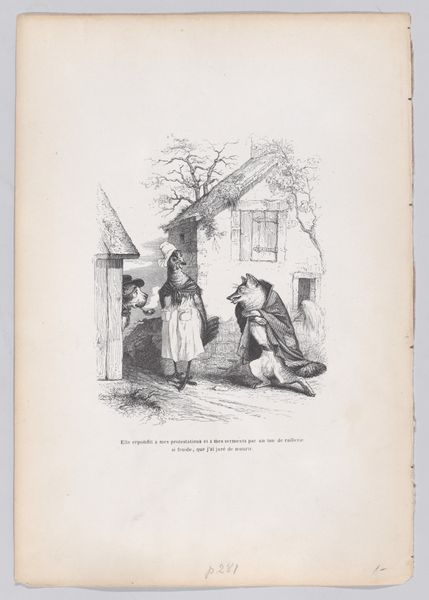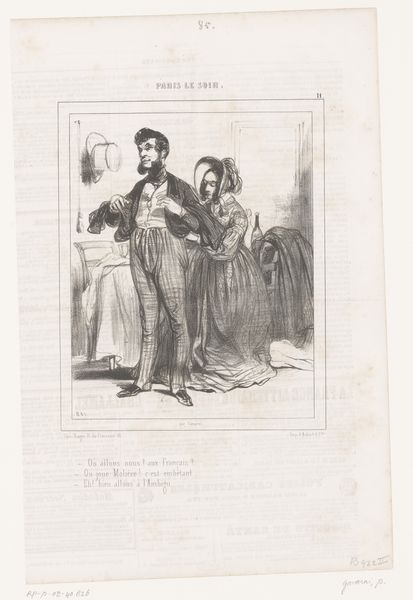
drawing, print, engraving
#
drawing
# print
#
figuration
#
romanticism
#
history-painting
#
engraving
Dimensions: Sheet: 9 13/16 × 6 5/16 in. (25 × 16 cm)
Copyright: Public Domain
Curator: What strikes you first about this piece? To me, it feels like an illustration from a children's book, even though the subject matter, Jupiter, is decidedly not for children. Editor: The light is beautiful and strange; it creates a playful scene, despite the old God looking almost sorrowful. Is that a scene behind him, or a portrait? The children around his feet give this engraving an oddly domestic air. Curator: Good eye! This is "Jupiter and the Chickens," crafted around 1845 by Jules David. What we are viewing is a print, an engraving, really. The print, held in the Metropolitan Museum of Art, highlights the humorous scene and brings to the fore not only religious symbolism but also familial imagery. The "Historical Review," written atop of the work, positions the viewer into the context of that scene as a matter of history itself, no matter the ridiculous context. Editor: "Chickens" can denote endearment, you know; in that time, the meaning can be different than just fowl as we know them. It would not be untoward to presume it also denoted "small ones" in a friendly sense. But if this work aims to show religious symbolism, why have children depicted here rather than... other gods? Curator: That is what I find particularly intriguing. The political cartoon in those days sought to depict authority figures, or famous historical people, in a bad light, showing them as flawed human beings who could not handle the weight of power in the new order. It mocks Jupiter for his laziness in this regard, I presume. Editor: Interesting! So the imagery lampoons authority via the setting – the domestic, and the childish. The use of chickens further infantilizes Jupiter’s authority; his 'chickens', so to speak, question the patriarchal structure represented here, in its various symbolic languages. The female figure almost seems worried for them... fascinating! Curator: And by utilizing popular visual language, the cartoon ensures a broad reach and cements its place in the visual and political culture of its time. I find myself wondering, who was its intended audience? Was this meant to poke fun for children too? Editor: It leaves one wondering if there is deeper, potentially hidden meanings as well; a secret for another day, I suppose. Curator: Indeed, let us ponder over the 'chickens' as they reflect the image of historical figures as frail human beings.
Comments
No comments
Be the first to comment and join the conversation on the ultimate creative platform.
